Glutathione S-transferase Mu 1 (gene name GSTM1) is a human glutathione S-transferase.
Glutathione S-transferase Mu 1 (gene name GSTM1) is a human glutathione S-transferase.
Cytosolic and membrane-bound forms of glutathione S-transferase are encoded by two distinct supergene families. At present, eight distinct classes of the soluble cytoplasmic mammalian glutathione S-transferases have been identified: alpha, kappa, mu, omega, pi, sigma, theta and zeta. This gene encodes a cytoplasmic glutathione S-transferase that belongs to the mu class. The mu class of enzymes functions in the detoxification of electrophilic compounds, including carcinogens, therapeutic drugs, environmental toxins, and products of oxidative stress, by conjugation with glutathione.
The genes encoding the mu class of enzymes are organized in a gene cluster on chromosome 1p13.3, and are known to be highly polymorphic. These genetic variations can change an individual's susceptibility to carcinogens and toxins, as well as affect the toxicity and efficacy of certain drugs. Null mutations of this class mu gene have been linked with an increase in a number of cancers, likely due to an increased susceptibility to environmental toxins and carcinogens. Multiple protein isoforms are encoded by transcript variants of this gene. [5]

Glutathione S-transferases (GSTs), previously known as ligandins, are a family of eukaryotic and prokaryotic phase II metabolic isozymes best known for their ability to catalyze the conjugation of the reduced form of glutathione (GSH) to xenobiotic substrates for the purpose of detoxification. The GST family consists of three superfamilies: the cytosolic, mitochondrial, and microsomal—also known as MAPEG—proteins. Members of the GST superfamily are extremely diverse in amino acid sequence, and a large fraction of the sequences deposited in public databases are of unknown function. The Enzyme Function Initiative (EFI) is using GSTs as a model superfamily to identify new GST functions.

Leukotriene C4 synthase is an enzyme that in humans is encoded by the LTC4S gene.

Glutathione S-transferase theta-1 is an enzyme that in humans is encoded by the GSTT1 gene.

Glutathione S-transferase P is an enzyme that in humans is encoded by the GSTP1 gene.

N-acetyltransferase 2 , also known as NAT2, is an enzyme which in humans is encoded by the NAT2 gene.

Glutathione S-transferase A1 is an enzyme that in humans is encoded by the GSTA1 gene.

Glutathione S-transferase A2 is an enzyme that in humans is encoded by the GSTA2 gene.
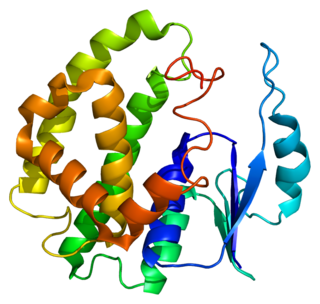
Glutathione S-transferase Mu 2 is an enzyme that in humans is encoded by the GSTM2 gene.

Glutathione S-transferase M3 (brain), also known as GSTM2, is an enzyme which in humans is encoded by the GSTM99

Glutathione S-transferase A4, also known as GSTA4, is an enzyme which in humans is encoded by the GSTA4 gene.
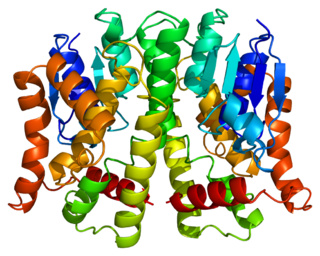
Glutathione S-transferase theta-2 is an enzyme that in humans is encoded by the GSTT2 gene.

Glutathione S-transferase Zeta 1 is an enzyme that in humans is encoded by the GSTZ1 gene on chromosome 14.
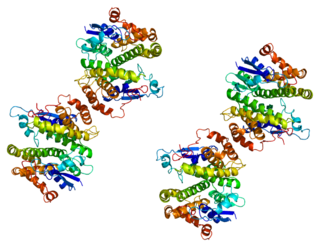
Glutathione S-transferase Mu 4 is an enzyme that in humans is encoded by the GSTM4 gene.

Microsomal glutathione S-transferase 1 is an enzyme that in humans is encoded by the MGST1 gene.
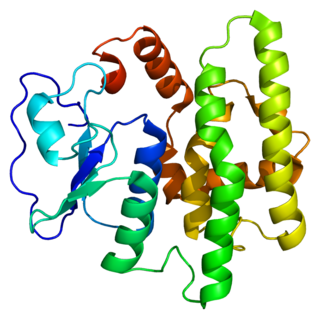
Glutathione S-transferase omega-1 is an enzyme that in humans is encoded by the GSTO1 gene.

Glutathione S-transferase kappa 1 (GSTK1) is an enzyme that in humans is encoded by the GSTK1 gene which is located on chromosome seven. It belongs to the superfamily of enzymes known as glutathione S-transferase (GST), which are mainly known for cellular detoxification. The GSTK1 gene consists of eight exons and seven introns and although it is a member of the GST family, its structure has been found to be similar to bacterial HCCA (2-hydroxychromene-2-carboxylate) isomerases and bacterial disulphide-bond-forming DsbA oxidoreductase. This similarity has later allowed the enzyme GSTK1 to be renamed to DsbA-L. Research has also suggested that several variations of the GSTK1 gene can be responsible for metabolic diseases and certain types of cancer.

Glutathione S-transferase A3 is an enzyme that in humans is encoded by the GSTA3 gene.

Glutathione S-transferase omega-2 is an enzyme that in humans is encoded by the GSTO2 gene.

Glutathione peroxidase 3 (GPx-3), also known as plasma glutathione peroxidase (GPx-P) or extracellular glutathione peroxidase is an enzyme that in humans is encoded by the GPX3 gene.
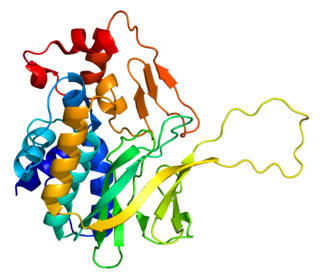
N-acetyltransferase 1 is a protein that in humans is encoded by the NAT1 gene.